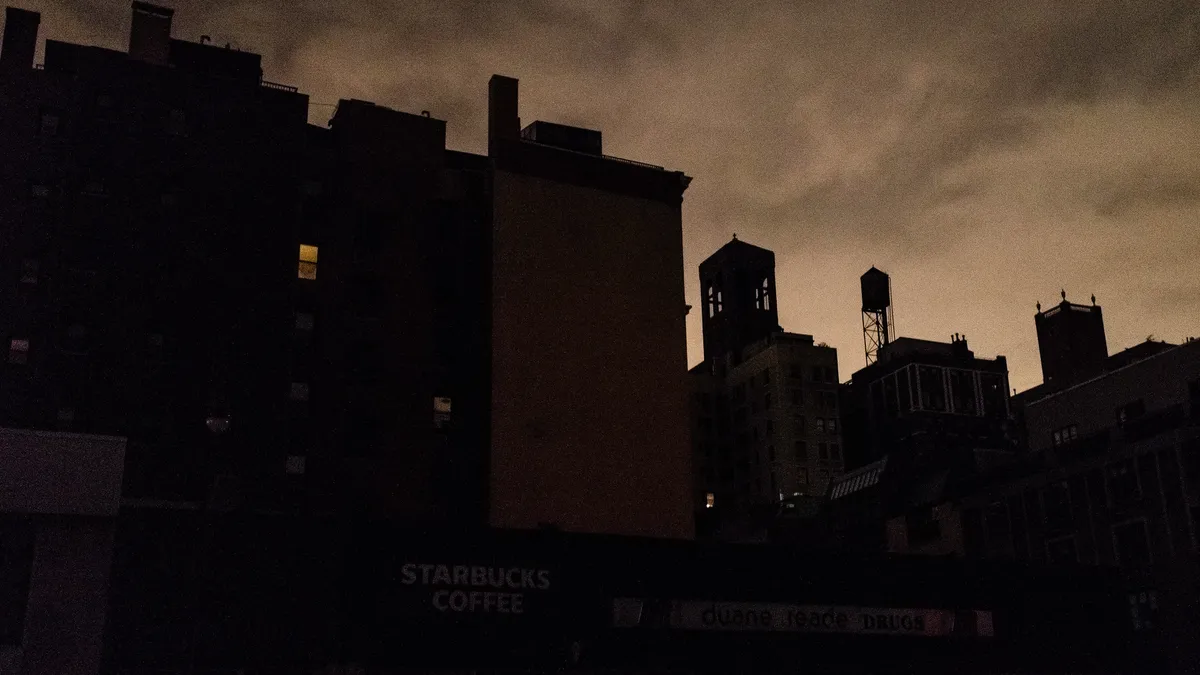Dive Brief:
- The electric power and natural gas sectors should collaborate on a “blackstart system restoration plan” to bring the grid back online in the event of a widespread blackout, a joint report released Tuesday by the Federal Energy Regulatory Commission and North American Electric Reliability Corp. recommended.
- Most large generators require electric power to begin operations, but blackstart resources are capable of starting up on their own and are critical to system recovery in the event of a grid collapse.
- Most blackstart resources utilize natural gas but FERC Commissioner Allison Clements has indicated she wants to explore how inverter-based resources, or IBRs, such as wind, solar and batteries could help with grid recovery.
Dive Insight:
The joint report focuses on Texas, and arises from the 2021 Winter Storm Uri report, which identified instances where blackstart resources “were rendered unavailable during the storm,” said study authors. But the recommendations could apply to any area.
Winter Storm Uri resulted in widespread blackouts and almost 250 deaths in Texas, but not a total grid collapse. The aftermath led to efforts to redesign Texas’ energy markets and strengthen the electric grid.
The study represents an “important milestone in cooperation and collaboration among federal, regional and state groups,” FERC Chairman Willie Phillips said in a statement. “I urge all regions of the country to review it because they, too, can benefit from its recommendations and observations.”
The report’s recommendations are voluntary. Along with coordinated development of a blackstart recovery plan, it also recommended entities charged with developing the plan “examine the diversity of fuel, single points of failure, fuel arrangements, and other limitations of each blackstart resource.”
The gas and electric sectors should work collaboratively “to develop this plan and should prioritize the natural gas infrastructure required to supply natural gas to the blackstart, next-start, and other essential resources,” Mark Henry, chief engineer and director of reliability outreach for Texas RE, told FERC in a Tuesday presentation of the report. Texas RE is the NERC regional entity for the area served by the Electric Reliability Council of Texas.
The report also recommended recovery plans “evaluate and incorporate, where feasible, a wide variety of options” including inverter-based resources, high voltage direct current ties, variable frequency transformers and other resources.
None of the blackstart resources in Texas’ recovery plan were wind, solar or battery resources, the report noted.
“I am interested in how IBRs could be used for blackstart preparedness and in finding solutions to support all resources with the capabilities to bolster grid resiliency,” Clements wrote on X, formerly known as Twitter.
“We want to make sure this commission is thinking about how we allow for these resources ... to provide this critical grid service,” she said during the meeting.
Batteries could be used as backup power systems to energize critical equipment at power plants, the report said.
“The team believes that with ongoing improvements in battery technology, batteries could make valuable contributions in emergency operations by providing support early in the blackstart system restoration as a power source, as a controllable load, and as a tool to maintain frequency and voltage,” the report said.
It goes on to recommend state and other authorities “assess the impact of a blackout on the natural gas supply chain” and develop an electric grid restoration plan “that meets the needs of both the electric and natural gas industries.”
“The natural gas supply chain may be severely stressed or completely unavailable during a blackstart system restoration scenario,” the report warns. “Stored natural gas may increase the likelihood of blackstart and next-start resources being able to secure fuel more quickly and reliably in the event of a blackout, which may be necessary to start system restoration.”
“Effective blackstart system restoration requires the necessary electric and natural gas entities to work collaboratively across multiple jurisdictions and functional responsibilities to restore the system,” Robert Clark, FERC co-lead of the joint study team, told the commission on Tuesday. The report’s recommendations “are tailored to apply to all entities that play a role in blackstart system restoration,” he said.















